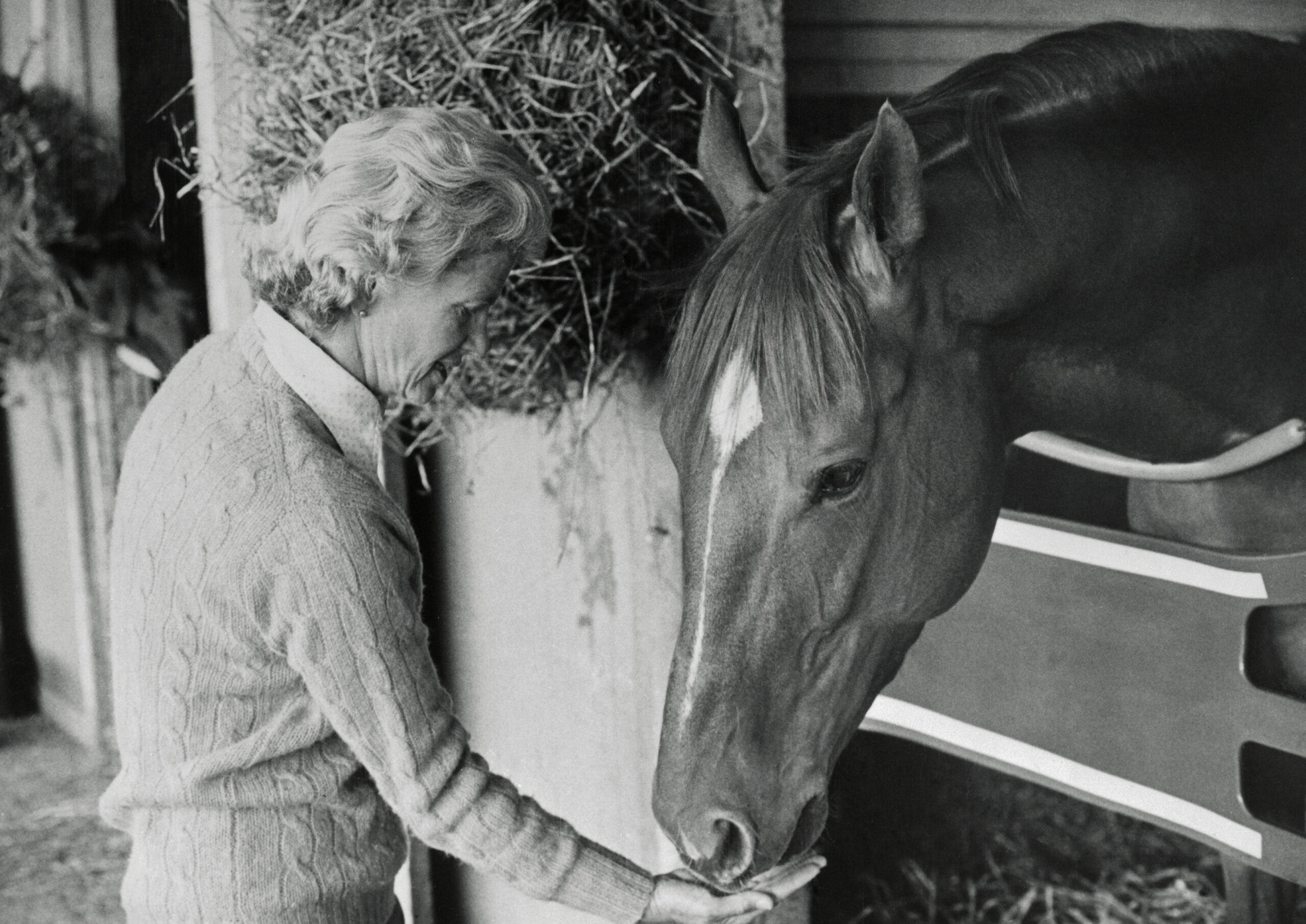Recalling Big Red and His Belmont
Secretariat’s superstar quality evidenced the excellence still valued by Americans.

Fifty years ago today, Secretariat won the Belmont Stakes by an astonishing thirty-one lengths. A remarkable feat by itself, it also capped a 1973 Triple Crown sweep in which the dazzling copper colt set records that still stand in all three races (Kentucky Derby, the Preakness, and Belmont stakes). Besides his rarified talent, “Big Red” had charisma and a feel-good backstory.
Secretariat was the unlikely hero Americans needed in the wake of Watergate, accelerating inflation, and the throes of the Vietnam War. He appeared magisterial and sporty at the same time—and played to his exultant fans. On race days, his handsome face bore a 1970s-chic checkered mask in royal blue and white, the colors of Virginia’s Meadow Stable. Ironically, Meadow’s owner, Penny Tweedy, acquired her champion by losing a coin toss to fellow breeder Ogden Phipps in 1969. With his victorious flip, Phipps won first selection of foals to be sired by leading stud Bold Ruler the following year, while Tweedy had to settle for second. She called her strapping consolation prize Secretariat, after the League of Nations’ Secretariat in Geneva. It was the sixth name she submitted to the credentialing Jockey Club, which had rejected the first five.
But Tweedy faced bigger challenges than choosing a name. With her Meadow Stable struggling financially, she took a chance and syndicated her promising two-year-old colt for future breeding rights. More than six million dollars flowed in. Secretariat saved his stable even before the start of his historic Triple Crown campaign.
Many experts contend that Man o’ War, whose racing career spanned 1919-1920, was the better horse. They cite his lengthier stride, which translates into greater speed, and his more impressive record on subpar tracks. He certainly emerged as the superior stud, siring 1937 Triple Crown winner War Admiral, among other champions. The majority of Secretariat’s six hundred-plus offspring proved mediocre.
Nevertheless, Secretariat’s effort in the Belmont ranks as the single most commanding performance by a racehorse in modern history. Before some sixty-nine thousand spectators on a humid June afternoon, he and valiant rival Sham alternated leads at an electrifying pace for the race’s first three-quarters of a mile. Big Red then broke away. An incredulous Chic Anderson memorably called it: “They’re on the turn, and Secretariat is blazing along…Secretariat is widening now! He is moving like a tremendous machine!” Anderson could only estimate the lengths of Secretariat’s victory. “I said twenty-five…It could conceivably have been more.” He was short by six.
When American Pharoah thrilled a crowd by winning the 2015 Belmont, and with it that year’s Triple Crown, the New York Sun recalled how Secretariat’s win was different:
The roar and clapping, though, wasn’t what people remember from the Belmont in 1973, when Secretariat hurtled into the stretch. They remember what passes, in grandstand terms, for a silence. Oh, the crowd was clapping and cheering, for sure. But somewhere around the three quarter mark, something strange had started to come over the track, a sense that something impossible, mysterious, and inexplicable—and maybe even dangerous—was happening before their eyes.
Secretariat eventually retired to Claiborne Farm in Paris, Kentucky, home to Gabby’s Restaurant, which promised “Food for the Conscious Eater” on a sign in town. In the ensuing years, fans never stopped coming to see him. The farm employed three assistants to handle the two hundred letters he received every day. Despite the hullabaloo, Big Red’s schedule rarely changed: He spent six hours in his paddock each morning and returned to his barn by two. He consumed twenty-five pounds of grass daily and loved peppermints.
Subscribe Today
Get daily emails in your inbox
In 1989, Secretariat succumbed to laminitis, a painful hoof malady. He was just nineteen, his still regal physique felled by a base disease. It is the industry practice to bury only a racehorse's hooves, head, and heart. Pragmatic reasons compel this, but the custom has symbolic meaning, too: These are the parts that make a horse a competitor. Given Secretariat’s significance, Claiborne workers constructed a six-by-six foot oak coffin to accommodate his entire body. He was interred under a holly tree in the farm’s modest equine cemetery. An autopsy conducted beforehand revealed that his heart weighed some twenty-two pounds, twice the size of a normal thoroughbred’s.
Today, Secretariat’s exploits might be told from a variety of “identity” angles. His devoted black groom Eddie Sweat was a sharecropper’s son who soothed the horse’s restless mind by speaking to him in a singsong Creole dialect called Gullah. His jockey, Ron Turcotte, advocated for disabled riders after suffering a catastrophic racing accident in 1978 that left him a paraplegic. Aging trainer Lucien Laurin delayed retirement to work at Meadow Stable in place of his son, who had taken a more prestigious post. Penny Tweedy, a former debutante and self-described housewife, remade herself into a shrewd businesswoman to save the family farm.
Secretariat’s sole identity was “superstar.” His enduring fame across five decades offers hope that Americans still value what he represented: excellence and heart. All twenty-two pounds of it.
Comments